The Doris Z. Stone Latin American Library and Research Center is a welcoming place of learning. The Doris Stone LAL works to generate scholarly community, building on the historical connections between New Orleans and the Americas. By responsibly collecting, preserving, and providing access to historical and contemporary resources on Latin America, the Caribbean, and diasporic communities, the Doris Stone LAL strives to be central to the processes of discovery and dissemination of knowledge at Tulane University. As a global resource, the Doris Stone LAL facilitates the advancement of scholarship about the region by providing information and services to researchers and the general public in the New Orleans area, nationally and internationally.
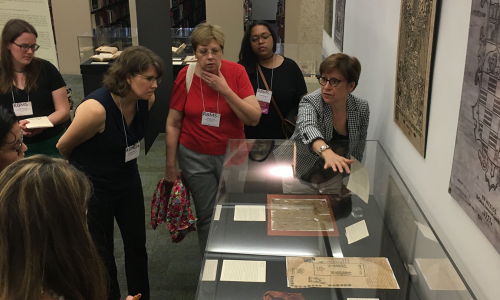
LAL Director Hortensia Calvo giving a tour of the library's Colonial Counterpoint exhibit (2018).
Beginnings to 1930
The Doris Z. Stone Latin American Library and Research Center at Tulane University had its origins in 1924 as the library of the Middle American Research Institute, then known as the Department of Middle American Research (DMAR). Its founding reflected New Orleans’ longstanding economic and cultural ties with cities along the Gulf of Mexico and the Caribbean, as well as Tulane’s historic orientation towards the region. Perhaps one of its many distinctions vis-à-vis most other repositories of its kind in the country is that the library itself was a natural outgrowth of the French and Spanish colonial past of Louisiana and its continuing commercial and cultural ties with neighbors to the south. With the purchase of the William E. Gates Collection, a stellar collection of Mexicana--rare books and manuscripts from the earliest years of Spanish rule to the Mexican Revolution in the 1910s--and the founding of the DMAR Tulane established itself on firm footing as a center for the study of the region. 1924 was the beginning of Latin American Studies at the university. Funding for both the Department and the collection was a gift from an anonymous New Orleans entrepreneur with extensive business interests in Central America. As per the donor’s wishes, the purpose of the gift was a gesture of regional goodwill: “to assist the University in developing more cordial relations between the people of [Middle America] and those of our own [country].”
The Gates Collection was rich in original material relating to early Mesoamerican languages, including painted Mexican manuscripts and some of the first European grammars and vocabularies; colonial Mexican manuscripts; letters from the military commandants of Yucatán (late-18th to early-19th century); the papers of the U.S.-born journalist and diplomat Ephraim George Squier; correspondence of the Iturbide court; the Moctezuma Family Papers; and hundreds of pieces of printed ephemera of the Mexican Revolution, including several dozen original Posada engravings. In subsequent decades, the collection expanded with key acquisitions in archaeology, anthropology and history of Mesoamerica, the areas of initial focus.
1930-1940
By the 1930s, manuscript acquisitions were restricted to the areas of faculty research, that is, Mayan Mexico and Central America. The Tulane expeditions to Mexico and Central America also provided opportunities to purchase ancient documents that today would be prohibited. Among these were several manuscript dossiers of land disputes, the Crónica de Maní, the Crónica de Yaxcukul, and the Crónica de Chicxulub. These dossiers contain documents from the sixteenth to the eighteenth century, and the Maní, with its accompanying manuscript map, is reputed to be the oldest example of writing of the Mayan language in alphabetical characters. Among the signature pieces acquired during this time are the Sedley F. Mackie Collection of more than 2,000 volumes of rare printed works relating to Mesoamerica and, particularly, the West Indies. The collection includes many priceless first editions of key works of the colonial period and is especially rich in works relating to European traveler accounts from the seventeenth and eighteenth centuries. In 1933, the library also acquired Fray Pedro de Oroz’s priceless 1585 manuscript history of the Franciscan order in New Spain. It was around this time that Blom’s connections in Southern Mexico led to the acquisition of the Mixtec Códice de Huamelulpan or Codex Tulane, a native pictorial manuscript from the mid-sixteenth century painted on a twelve foot strip of deerskin, which has become one of the most iconic pieces of the collection. Today, Tulane houses one of the largest collections of original post-contact Mesoamerican codices in the world.
Other unique collections acquired during these early years were two autograph letters by Spanish conquistador Hernán Cortés, one of which lays out the first code of laws in the New World. The other letter was written by Cortés on 21 September 1521, three weeks after the fall of Tenochtitlán, and is the earliest known document written by Cortés from the mainland. Also from this time period, the extensive Viceregal and Ecclesiastical Mexican Collection (VEMC), culled together from various individual groups of documents over time, is especially worthy of note. In 1932, Tulane acquired a collection of about 3,000 miscellaneous, but historically valuable, dossiers dating from the mid-sixteenth century to early Independence, from all parts of Mexico and covering a gamut of subjects. The documents, of great research value in themselves, did not share a cohesive unity of time, place, or subject matter. Rather, there were civil and religious documents relating to Church administration and the Inquisition, relations of members of the various religious orders and the Church, land disputes between Spaniards and Indians, construction of transportation infrastructure and public buildings, and many other matters. Some of the dossiers were several hundred pages. Additionally, there were discrete groups relating to the Benito Juárez period, to the administration of Porfirio Díaz or porfiriato, and to the Mexican Revolution of 1910. In 1934, several other items were added, such as a collection of forty-four volumes of administrative papers from New Spain, including a 400-leaf volume of minutes of the Real Audiencia from 1575 to 1602, and other bundles of manuscripts acquired separately. It is from the Viceregal and Ecclesiastical Mexican Collection that two unpublished holograph letters, written in 1682 and 1687, by Mexican writer Sor Juana Inés de la Cruz’s mentor, María Luisa Manrique de Lara y Gonzaga, were recently discovered, containing details about the famous friendship of these two extraordinary women. Also in 1933, the DMAR purchased from the daughter-in-law of Captain Callender Fayssoux, aide-de-camp to notorious filibuster William Walker, handwritten records of Walker’s armies and invasions of Nicaragua in 1855, 1857, and 1860.
Acquisitions went well beyond unique or rare pieces and manuscripts. The early DMAR staff developed an active library materials exchange program whereby offprints of recent publications on Mesoamerican archaeology, anthropology, linguistics and history were received. These items form the core of an extensive pamphlet collection at the Doris Stone LAL, many of which are not held in other libraries or are not easily obtained.
By the end of the 1930s, Tulane’s reputation as a research center for Mesoamerican studies was well established, and the DMAR Library expanded its network of connections. Arthur Gropp was hired as librarian in charge of the collection, and became very active in forging exchanges between Tulane and other libraries in the region. Gropp would later serve as acting co-Director of the DMAR in charge of the library after the dismissal of Blom in 1941.
1940-1970
Within Latin American studies, the post-World War II federal support of area studies programs was additionally fueled by the 1959 Cuban Revolution, which refocused international attention, particularly in the neighboring United States, on the region. Reflecting the geo-political climate of the time, the overall broadened scope of the Latin American curriculum within the university, as well as strengthened ties to peer research libraries around the country, the DMAR Library was renamed the Latin American Library (LAL) in 1964. Encompassing a decidedly regional scope, the Doris Stone LAL was moved across the street from Jones Hall to the fourth floor of the recently built Howard-Tilton Memorial Library, where it is still located today, under the administrative umbrella of Tulane’s library system, and it remains a discreet collection.
A decade later, the LAL continued to expand beyond Mesoamerica and the Caribbean to encompass all geographical areas, relevant disciplines, and also broadened collection policies to include other formats of research material. A key development was the founding of the Tulane University Latin American Photographic Archive (TULAPA) in 1976, a visionary step that represented one of the first such archives in the country devoted to Latin America. The archive was established by co-founders and LAL benefactors Steve and Abbye Gorin.
Two others played a prominent role in the early development of the archive: Thomas Niehaus, Director of the Latin American Library, 1977-1990, and Humberto Rodríguez-Camilloni, Professor of Architectural History in the Tulane School of Architecture. In the late 1970s, Rodríguez opened doors in his native Peru, arranging for the purchase of photographs and drawings by the noted architect-engineer Emilio Harth-Terré (1899-1983) and a collection of photographs by Abraham Guillén Melgar (1901-1985), a documentarian of Andean cultural heritage for fifty years.
Niehaus also purchased important collections such as the photographs of noted Cuzco photographer Martín Chambi (1891-1973), the Nicaraguan images of Judith Hancock de Sandoval, and historic photographs of Guatemala, Panama, Cuba, and Brazil. As the archive became known in academic circles, other collections came into the library in the form of donations, such as the Sidney D. Markman archive of images of architecture in Mexico, Central America, and Spain.
1980-1990
By the 1980s, the LAL had expanded considerably in collecting scope and numbers of volumes. The manuscript holdings followed suit, but lacking were descriptions of the collections, finding aids, and archival housing of the documents. This was particularly true of older material. The bound manuscripts in the Gates collection had been cataloged in the 1930s by the Dewey Decimal classification system and incorporated in the library’s rare books collection. Countless papers were loose, and the collection now also comprised the VEMC, and others previously noted. Portions of these priceless documents remained, as they had been received, wrapped in brown paper and tied with butcher string, without identification. During the mid-1930s, the library employed persons “who knew Spanish” to begin describing the VEMC documents. Little progress was made. Whatever facility the persons may have had with the language, they lacked knowledge of history, of paleography, of abbreviations, and of colonial Spanish America. Access to materials was severely restricted without proper cataloguing.
In the 1980s, thanks to a sizeable grant from the National Endowment for the Humanities, 85% of the collections were cataloged in three years, under the leadership of Guillermo Náñez Falcón, assisted by Ruth Olivera. The resulting card file of collection names, personal and place names, date file, and subjects is among the most detailed and comprehensive for manuscript collections of this kind in the country. The seemingly mundane task of organizing and describing these collections and creating finding aids or, in Gates’ lingo of “card-indexing” the collections, laid the groundwork for the subsequent development of the library’s outreach efforts. For the first time, the valuable collections acquired during the first years of the founding of the library that had remained in obscurity were accessible not only to Tulane researchers but to a broader number of national and international scholars.
1990-2003
In the 1990s, the LAL began to increase its visibility and engagement with wider audiences. Perhaps a turning point in this process was the meeting of the International Congress of Americanists held in New Orleans in 1991. Attracting thousands of scholars from around the world and held on the eve of the quincentennial of the European arrival to the New World, the Congress was a veritable showcase for the LAL’s unique holdings. A splendid exhibit featured the library’s stellar collection of original Mesoamerican painted manuscripts, among other collections, and contributed greatly to publicizing its first-rate collections worldwide.
Other initiatives followed that contributed toward greater dissemination and access of the collections. Starting in the late-1990s and continuing for three years, the LAL contributed over 3,000 monograph volumes of Central American imprints to be reformatted on microfilm as part of a SOLINET-led process to preserve “brittle” books. Until the mid-2000s the library also negotiated with commercial microfilm companies to reformat six rare manuscript and pamphlet collections available for sale to other institutions. Since 2012, thanks especially to the efforts of LAL Curator Christine Hernández, digitization projects through the Tulane University Digital Library are making rare holdings available freely to researchers worldwide.
2003-Present
On the retirement of Director Guillermo Náñez Falcón after 12 years, Hortensia Calvo assumed the position of Doris Stone Librarian and Director in 2003. During her tenure, the LAL has substantially enhanced the size and depth of the Library’s historical strengths while placing a decided emphasis on outreach, public events, exhibits and digitization. The Library’s rare books, manuscript, photographic and cartographic holdings have been greatly expanded, while holdings in literary studies, popular culture, travel, plastic arts and ephemera have been significantly strengthened and expanded. During this period the LAL has added 43 new manuscript collections (2,200 linear feet) for a total of186 discrete collections or 6,250 linear feet. Among the most notable additions after 2009 are the Sutherland-Taxco Collection and the Ulrich Family Collection of William Spratling Papers; the Alan Boss Collection of Cuban Ephemera; the Louis Boeri and Minín Bujones Collection of Cuban American Radionovelas; the Elías Barreiro Collection; the Pan-American Life Insurance Group Collection; the General Rafael Melgar Collection; and more recently the extensive Chamorro Barrios Collection of Nicaraguan history. The Image Archive, one of a handful in the United States devoted to Latin America and the Caribbean, has more than doubled in size since 2009. 32 new collection and 49 albums with a combined 73,500 images were added. The collection now contains 128,000 pieces. Among the most notable recent acquisitions are collections by renowned Colombian photographers Manuel H. Rodríguez, Viki Ospina, and visual artist Erika Diettes; the extensive Marcelo Martínez Palma Collection of stereoscopic glass slides from early 20th century Yucatán; limited edition photographs from the Amazon by renowned Brazilian photographer João Farkas; and various collections by noted photographers of the 19th and early 20th centuries such as Abel Briquet, Antíoco Cruces and Luis Campa; Hugo Brehme, Christian Cravo, Celeste González. Francisco Villegas Aramayo, Manuel Gómez Miralles and others from the Forrest D. Colburn Collection; Christiano Junior, Leo Matiz, among many others. So too the Library’s cartographic holdings have substantially expanded to 6,000 pieces, including over 200 rare maps from the Rubini Family Collection in memory of Joseph Rubini.
The Library’s ongoing calendar of public events and exhibits have increased awareness of collections and services and brought new generations of users. The LAL’s presence in the classroom and the development of innovative teaching approaches connecting students and faculty with the library have been greatly enhanced by Research and Instruction Librarian Rachel Stein. And the development of the LAL’s digitization efforts have emerged as one of the Library’s most notable trends, as noted above. Since 2006, the LAL and Tulane Libraries host the SALALM Secretariat, the headquarters of the foremost professional association of academic libraries devoted to Latin America and the Caribbean.
Perhaps no other event has transformed the LAL and opened up possibilities for acquisitions and access as the establishment of the Doris Stone Endowments in 2002, which support the salary of the Director, travel, special public events such as exhibits and invited speakers that promote the collections, and special acquisitions that supplement university appropriated funds. A generous gift of the Zemurray Foundation, the Doris Stone funds have not only established the LAL’s finances on a more secure footing, they have also provided a base to seek additional funding in the form of other endowments.
On August 29, 2005, the man-made levies of New Orleans collapsed in the wake of Hurricane Katrina creating a human catastrophe of biblical proportions. Located on the fourth floor of the Howard-Tilton Memorial Library, the LAL’s collections were largely spared from damage, however the LAL microfilm suffered extensive damage as the basement of the building where it was housed took on almost nine feet of water. Only a fraction of the microfilm was recovered. These losses were minimal compared to the damage to other parts of the university’s buildings and collections, not to mention the loss of life, the human tragedies and devastation of infrastructure throughout the city. The LAL was fortunate as the recipient of many gestures of affirmation and hope, like so many that pulled the city together in the months and years after the tragedy. In fact, as occurred in many other parts of New Orleans, the disaster served as a call to action to preserve and protect the patrimony that is housed in this historic and multicultural city. One notable response came in the form of a generous gift from emeritus historian Richard E. Greenleaf, a longtime champion of libraries and great supporter of the LAL in his many years as a Tulane professor and director of the Latin American Studies Program. Thanks to the Richard E. Greenleaf Endowed Fund, in 2007, the LAL established the Richard E. Greenleaf Fellowships to sponsor short-term visits for scholars residing in Latin America and the Caribbean to come to New Orleans to conduct research at the library. These fellowships have substantially broadened access to the library’s unique holdings to scholars across the region and, at the same time, expanded the presence of Latin American scholars on campus. In addition to the Doris Stone Endowed Funds and the Greenleaf Endowed Fund, other gifts from generous donors support different aspects of the work of the LAL: the Jim and Penny Morrill Endowed Fund for Mesoamerican Art History, the Christian-Pradel Endowed Fund, the Steve and Abbye Gorin Endowed Fund for Photographic Materials, the Richard E. Greenleaf Latin American Library Endowed Fund, and the Yvette M. Jones Latin American Special Collections Fund. More recently, the lifelong contributions by former director Guillermo Náñez are honored through the Guillermo Náñez Falcón Endowed Fund bequeathed on his death in 2019.
In 2024, Tulane University will celebrate the centennial of the establishment of Latin American Studies, marking one hundred years since the core collections of the LAL were established. It is a fitting time to reflect on the Library’s past and future. The LAL is today one of the oldest and most renowned research collections of Latin Americana in the country, with unique materials from thirty countries in the region and the Caribbean.
Learn More
Parts of this text are abridged and adapted from Hortensia Calvo and Guillermo Náñez, “Crescent City Connections to Latin America: A History of the Latin American Library at Tulane University” in Latin American Collection Concepts: Essays on Libraries, Collaborations and New Approaches. Gayle Ann Williams and Jana Lee Krentz, eds. Jefferson, North Carolina: McFarland & Company, Inc., Publishers, 2019
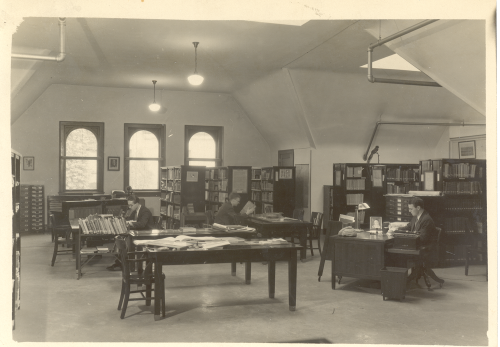
Library of the Department of Middle American Research (DMAR), c. 1930s.
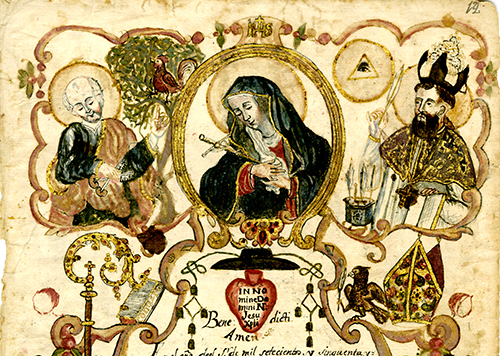
Document professing the religious vows of the Order of St. Augustine (New Spain, 1757), William Gates Collection.
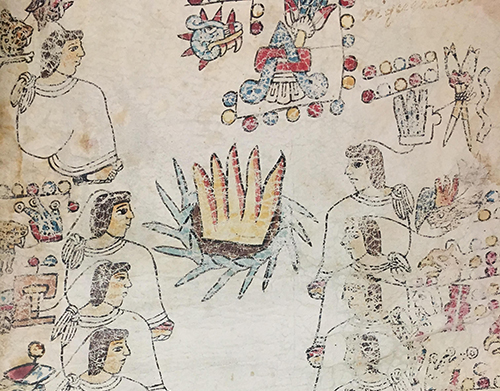
Detail of Codex Tulane.
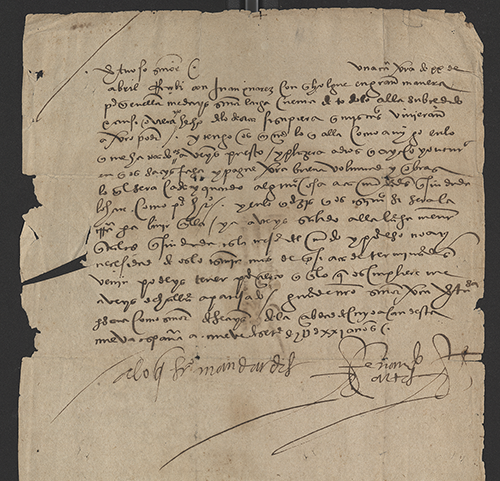
One of two autograph letters by Spanish conquistador Hernán Cortés held at The Latin American Library, 1521.
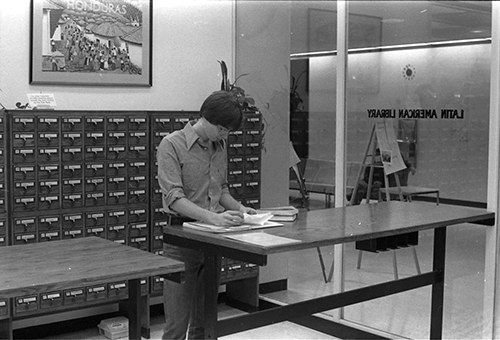
Researcher at the LAL a few years after its move to the 4th floor of Howard-Tilton Memorial Library, 1978.
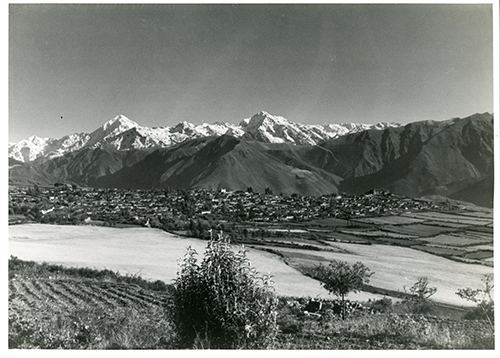
Image of Cuzco from the Emilio Harth-Terré collection.
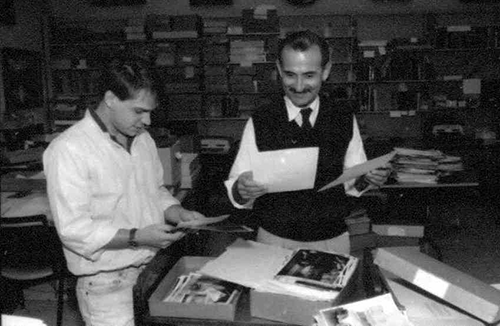
Former LAL Director Guillermo Náñez Falcón (right) and student, 1980s.
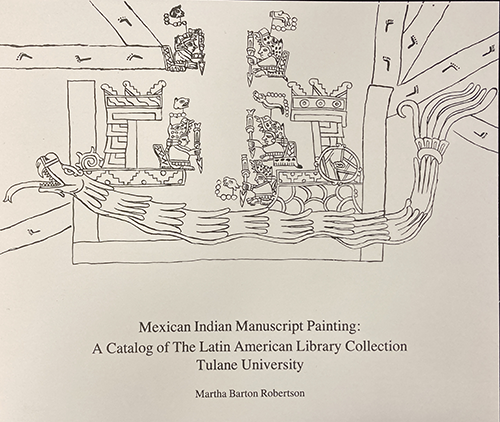
LAL exhibit brochure from the Annual Meeting of the International Congress of Americanists that met at Tulane University, 1991.
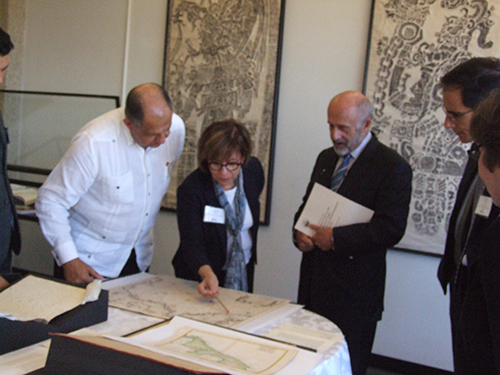
Tulane University alumnus, Luis Guillermo Solís (left), former President of Costa Rica, visits the LAL, 2017.
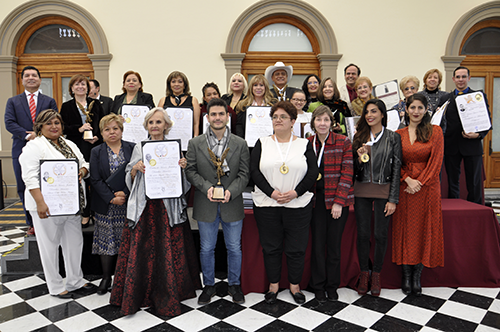
LAL staff with other recipients of the Jaguar Internacional de las Artes, Mexico City, 2019.
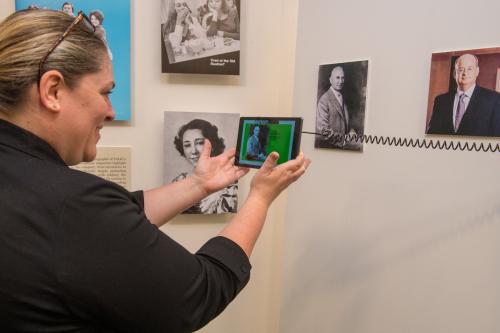
Visitor using the LAL's Augmented Reality (AR) app at the Pan-American Life in New Orleans Exhibit Opening, 2019.

LAL staff, from left: Carol Ávila, Verónica Sánchez, Rachel Stein, Hortensia Calvo, Christine Hernández, and Penelope Ojeda, 2019.
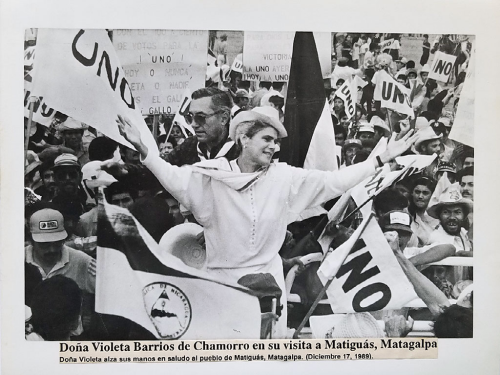
Former President of Nicaragua Violeta Barrios de Chamorro campaigning in 1989, Chamorro Barrios Family Papers.